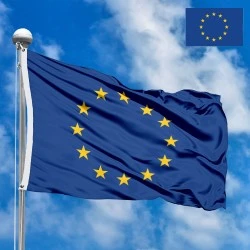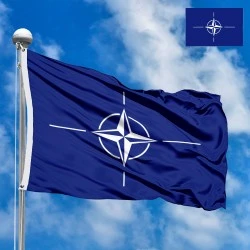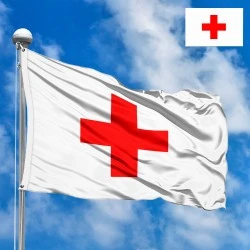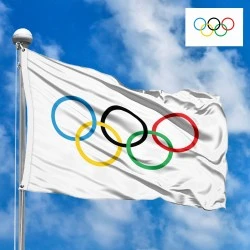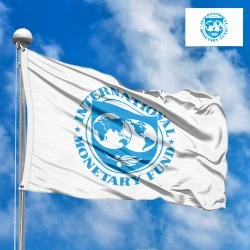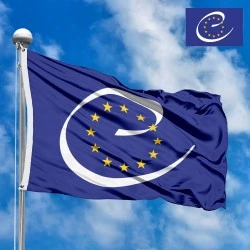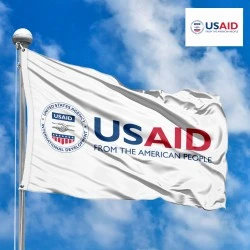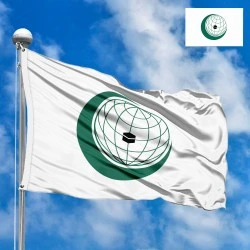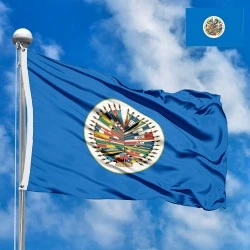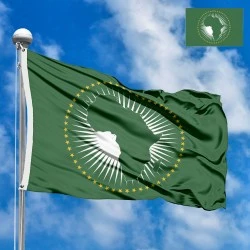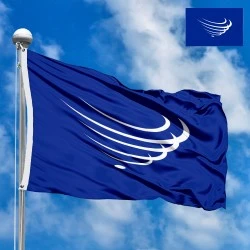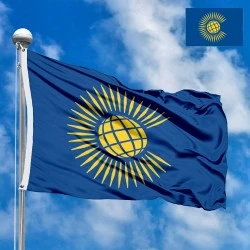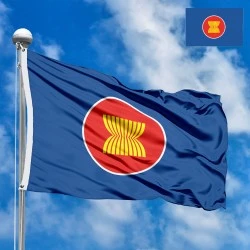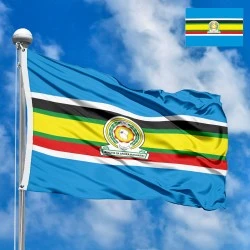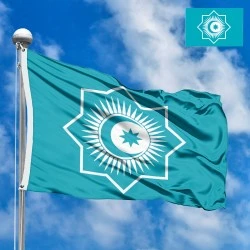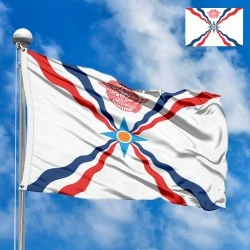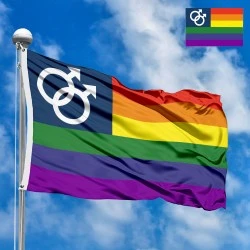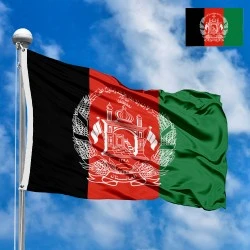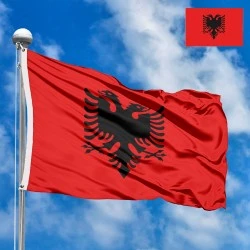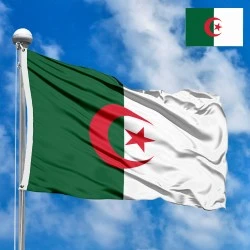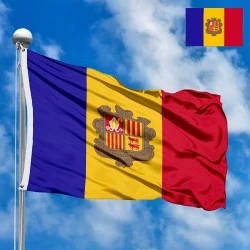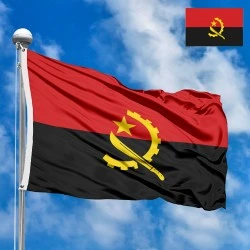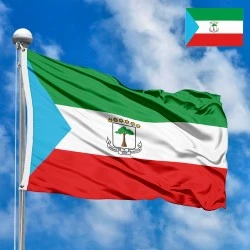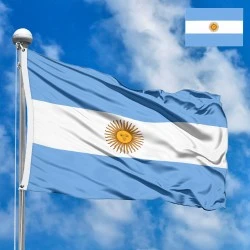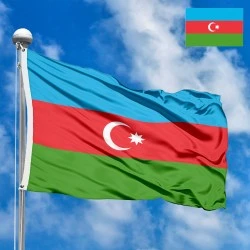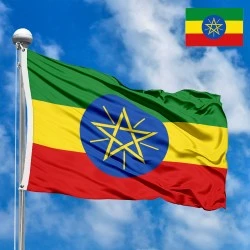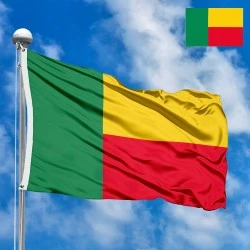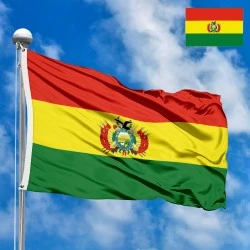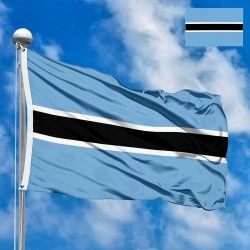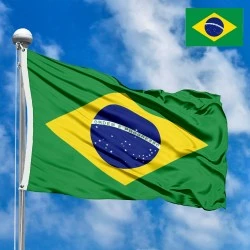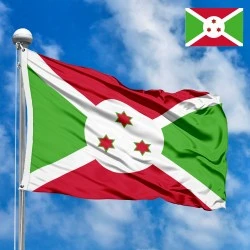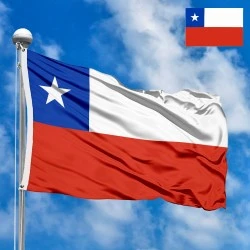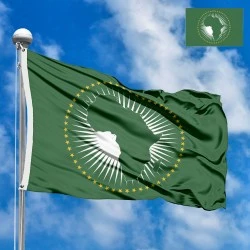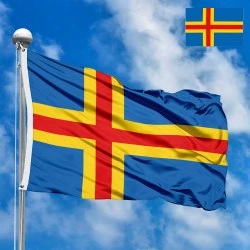- All Flags
- Flags of Countries by Continent
-
Flags of Organizations
- Flags of UN countries
- Flags of the European Union countries
- Flags of NATO countries
- Flags of the countries of the Organization of Islamic Cooperation
- Flags of the countries of the Organization of American States
- Flags of the Arab League countries
- Flags of the African Union countries
- Flags of the countries of the Union of South American Nations
- Flags of the Commonwealth of Nations
- Flags of the countries of the Secretariat of the Pacific Community
- Flags of the Nordic Council countries
- Flags of the Caribbean Community
- Flags of the countries of the Association of Southeast Asian Nations
- Flags of the East African Community
- Flags of the countries of the Organization of Turkic States
- LGBT Community Flags
- Historical Flags
- Ethnic Flags
- Flags of the USA (states)
Description
The flag of the Organization for Security and Co-operation in Europe (OSCE) is not a traditional state or international symbol ratified by an official act. Like other international organizations, the OSCE uses its logo, placed on a solid background, as its visual representation. This "flag" symbolizes the unique nature of the OSCE as the world's largest regional security organization. It reflects the mission of preventing conflicts, managing crises, and building trust among its 57 participating states, which cover a vast geographical area from Vancouver to Vladivostok.
Design and Symbolism
The visual symbol that serves as the OSCE "flag" is a white banner with the organization's blue logo at its center.
-
The Logo: The logo consists of several elements that together convey the OSCE's mission:
-
A stylized globe: The image of the globe, composed of interlocking lines, symbolizes the OSCE's geographical scope, which extends across three continents. These lines represent the networks of cooperation, dialogue, and interconnectedness among the participating states.
-
The organization's name: Next to or below the globe are the letters "OSCE", which serve as a recognizable acronym. This inscription clearly identifies the organization, confirming its status.
-
-
The Colors: The use of white and blue in the OSCE's symbolism has a symbolic meaning. The color white represents peace, neutrality, and openness, which are fundamental to the OSCE's mission as a platform for dialogue. The color blue is traditionally associated with security, stability, and trust, which directly corresponds to the organization's mandate.
Dimensions and Proportions
Since the OSCE "flag" is an element of its corporate identity rather than a legal symbol, its proportions are not regulated by international law. Instead, they are defined by the OSCE's style guides and brand book. This allows the logo to be used in various formats—from small badges to large banners—while maintaining its recognizability and visual integrity.
History of Creation and Adoption
The history of the OSCE began with the Conference on Security and Co-operation in Europe (CSCE), which was convened in 1973 at the height of the Cold War. It culminated in the signing of the Helsinki Final Act in 1975, which laid the groundwork for dialogue and cooperation between East and West. At that time, the organization had neither a flag nor formal symbolism.
In 1995, the CSCE was transformed into the fully-fledged Organization for Security and Co-operation in Europe (OSCE), which marked its transition from a mere forum to a structured international organization. It was during this period of institutionalization that the current logo was developed and adopted. Its approval was not a formal act, like that of the UN, but rather an evolutionary step in the development of the organization's visual identity.
Countries and Regions
The OSCE is a unique structure uniting 57 participating states from Europe, North America, and Central Asia. The organization's geographical scope extends "from Vancouver to Vladivostok." This "flag" is used at the headquarters in Vienna, as well as in missions and field operations throughout this vast area. It symbolizes the commitment of all participating countries to collective security, as well as the principles of democracy, human rights, and the rule of law.
Interesting Facts
-
The OSCE is one of the few international organizations whose members encompass all the key geopolitical blocs of Europe, North America, and Asia.
-
The OSCE "flag" is often used as a neutral symbol in peacekeeping missions and in regions where the organization facilitates conflict resolution, such as in Ukraine, Georgia, and the Western Balkans.
-
The absence of an official flag underscores the OSCE's nature as a forum for dialogue and negotiation, where the focus is not on symbols of power but on mutual respect and cooperation.
In the demonstration images, full-size flags are shown with proportions of 2:3, and hand-held flags with proportions of 1:2.
Donation
Download
Completely free for commercial and non-commercial use (public domain).
You can freely use them in your news magazines, websites, software, mobile applications.
We appreciate a backlink to https://flagssite.com
Raster files - OSCE flag (PNG, JPG)
 Waving flag
Waving flag
- PNG format (transparent background), 72dpi, dimensions in Pixels (px), aspect ratio 3:4.
- 15х20 px
- 30х40 px
- 60х80 px
- 120x160 px
- 240x320 px
 Sizes:
Sizes:
"v15" - image size (by height); if necessary, replace with available: v15, v30, v60, v120, v240.
!!! For resizing, use the Latin (eng) keyboard layout.
<img src="https://flagssite.com/flags/v15/20803.png" alt="OSCE flag">
 Round flag
Round flag
- PNG format (transparent background), 72dpi, dimensions in Pixels (px), aspect ratio 1:1.
"d15" - image size (diameter); if necessary, replace with available: d15, d30, d60, d120, d240.
!!! For resizing, use the Latin (eng) keyboard layout.
<img src="https://flagssite.com/flags/d15/20803.png" alt="OSCE flag">
 Rectangular flag 2:3
Rectangular flag 2:3
- JPG format, 72dpi, dimensions in Pixels (px), aspect ratio 2:3.
"h30" - image size (by height); if necessary, replace with available: h15, h30, h60, h120, h240, h360, h480.
!!! For resizing, use the Latin (eng) keyboard layout.
<img src="https://flagssite.com/flags/h30/20803.jpg" alt="OSCE flag">


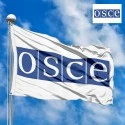
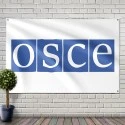
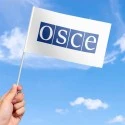

 Sizes:
Sizes:
 Sizes:
Sizes:
